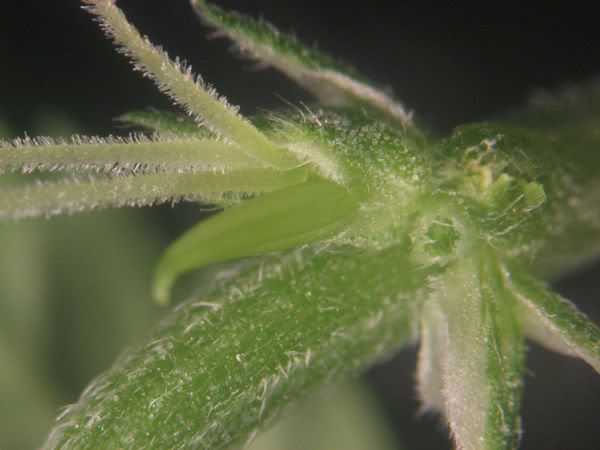The Y chromosome provides the genetic map of a mated pair with what it needs to produce male progeny. Without the Y chromosome to use in the recombination of genes, all slots are filled with X chromosomes and nothing is available to produce males. So, basically the Y chromosome makes boys.
The importance of the intersex gene is evident in light of the fact that when a female/female breeding is done, there is no Y chromosome involved at all, so there is no way a male can exist.
But we see fully developed stamen being produced by females that have no Y chromosome...and how can that be? The intersex genes and their triggers. Without them existing in the genetic map somewhere, there is no chance of seeing even forced stamen.
Now that opens another can o' worms concerning if a true female can be forced to produce stamen or not...of which I am in the camp that says a truly dioecious female cannot be forced to produce stamen, no matter the amount or type of stress.
Some have speculated that trully dioecious of the species does not exist.
hoosier, if what you say is so, then it follows that one can't simply produce female seeds without the aid of intersex genes.
hence why there seems to be a high occurrence of hermaphrodite expression in feminized seeds.
harking back to what Sam the Skunkman said, when hermies appear, it follows that they appeared because either ancestor carried intersex genes, and if fem seeds rely on such intersex genes in order to be able to f/f, it follows that fem seeds will always carry that intersex gene waiting to pop-up in the offspring.
also, how much do we really know about the whole genetic make-up of that Y chromosome? besides Sexual Determination, could it also carry information regarding Disease Resistance, Cannabinoid Diversity, Odor/Flavor in female Resin, etc... etc... etc... ?
if we are discounting the Y chromosome simple on the basis of its potential influence on Sex Determination alone, without considering other major important factors, then we are indeed missing essential genetic information.




